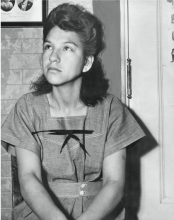
In class the word machismo has been brought up a lot. Recently we talked about it being used in two different ways. One way that it was being used was to describe the wrong doings and oppression that Chicanas felt from the Chicano men. In the past few days we also discussed and read about machismo in the eyes of Chicanos. Many saw it as helping out the family, staying true to their word. One of the images that have survived for so long was the image of the pachuco. The pachuco emerged in the 1940’s during the Second World War and has since been a cultural icon. Yet standing right besides this cool cat was another figure. The pachuca was another figure of resistance. Both figures with their style resisted the norms and through that “came to signify resistance, style, and style as resistance” (Ramírez). With their style and slang, they resisted and rejected the norms of society. Just as effective form of resistance, was the act of remaining “silent”.
While pachucos were hailed the epitome of cool, pachucas were seen in another light. They were seen along the lines as “putas”. This is along the lines between the virgin and whore dichotomy. The pachuco was seen as a cultural icon with pride and example of male masculinity and coolness as Ramírez states that Chicanos became cool from distancing themselves away from roles that their mothers did. So it can be seen that some were hostile towards pachucas who they saw as challenging their masculinity. Instead women that spoke “Caló” was viewed an as taboo act. It can be seen that by separating themselves from their mothers they proved their masculinity, and when Chicanas began to dress and talk in a similar fashion it can be seen a threat to their masculinity and coolness.
Like the pachucos who stood their ground, pachucas stood theirs in the courts and trials. The way they responded or choose not to respond to persecutors’ questions by refusing to say anything that could incriminate their friends or boyfriends, they stood against the racist charges and views of the courts. In the case expert of the article from, showcases an example of resistance from pachucas. Even the way they talked when answering was a way to rebel. Diverting from proper grammatical, instead they chose to use “slang” (Ramírez). Defiantly ignoring the prosecutors and the social idea of women being proper, they instead chose to reject them. Similar in Blackwell’s book, pachucas seemed to be empowered or by the use of this “taboo” language. They rejected to answer to a society that was already against them. Sometimes refusing to talk is as good as speaking out against the establishments.
References:
| 1. Saying “Nothin’“, Catherine S Ramírez. Frontiers. Boulder: 2006. Vol. 27, Iss. 3, p. 1-33,158-159 (35 pp.).2. Pachuco woman image from Los Angeles Her- ald-Examiner Collection. Los Angeles Public Library. |